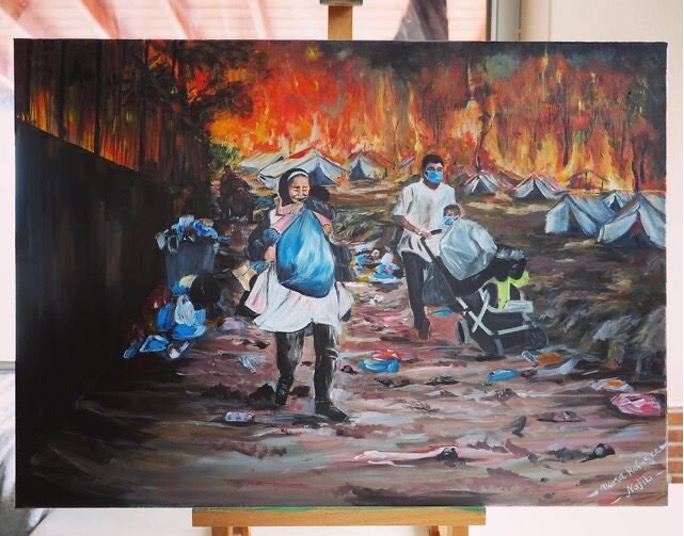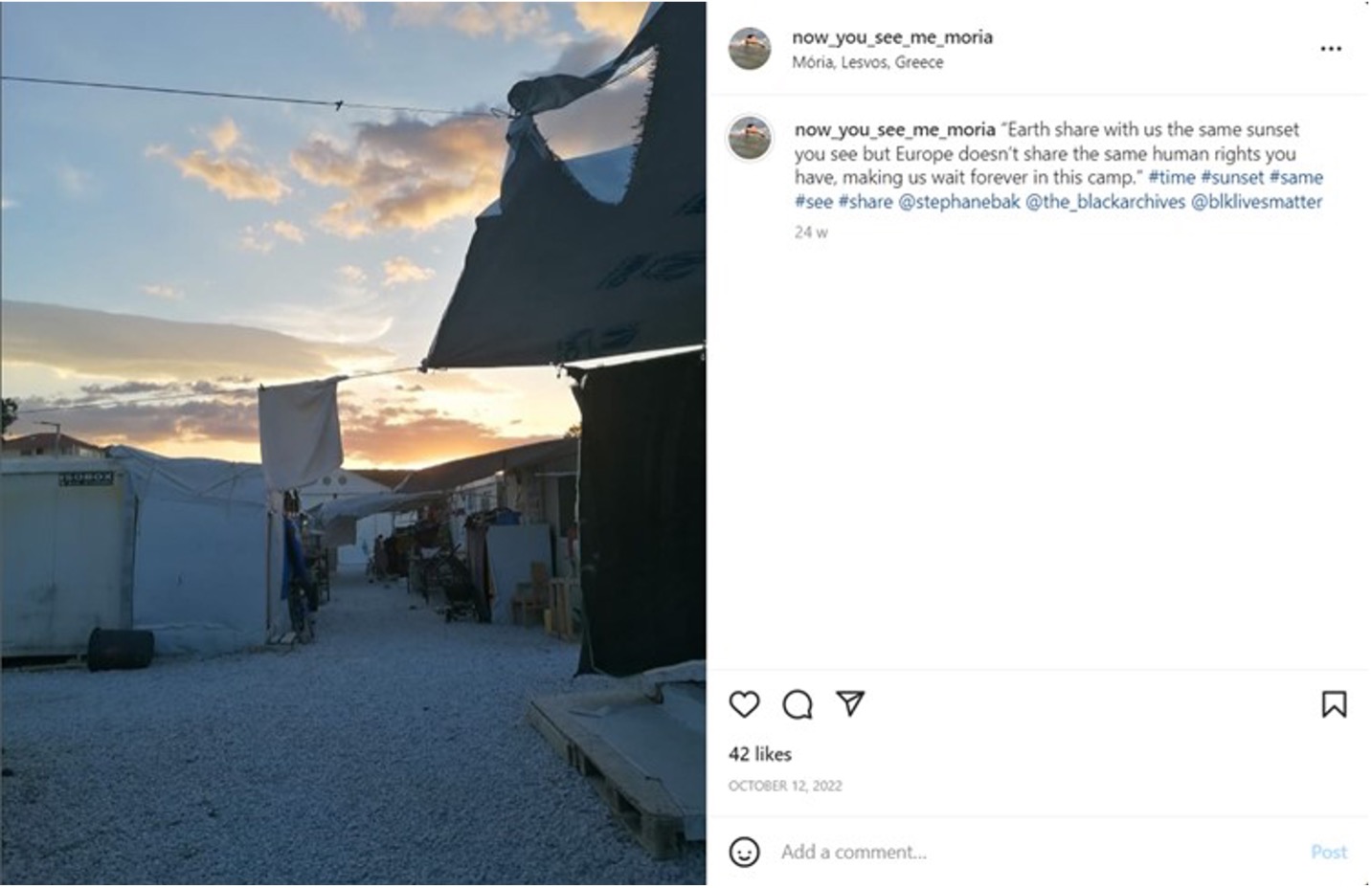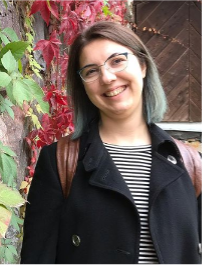Transdisciplinary research is essential to understand how migration management measures impact refugees and how refugees challenge these measures in their everyday struggles. As Martiniello (2022) described, ‘[t]ransdisciplinarity implies that each scholar ventures outside the comfortable borders of her/his academic discipline to learn from and understand other points of view and perspectives.’ In this short piece, I explore the insightful contributions that transcending the boundaries of a single discipline may provide for elucidating the complex interplay between migration management and refugee struggles in the light of the measures of migration management adopted by the European Union (EU) and Member States following the summer of 2015, which continue to pose profound implications for migrants and refugees. How can a transdisciplinary study informed by international refugee law, border studies, and visual approaches facilitate our understanding of this interplay ‘from the perspective of law’s subjects’ (see Mulcahy, 2017), namely refugees, and that of states?
To answer this question, I will reflect on two case studies I conducted as part of my doctoral research project during 2022–2023, The Hope Project Greece and ‘Now You See Me Moria’. I examine the interplay between migration management and refugee struggles with theoretical and empirical investigations in the Greek-Turkish context, with a particular focus on the Greek ‘hotspot’ islands in the wake of 2015. I consider the interplay between these two processes as a mutually constitutive, continuous, and agonistic ‘border regime’ (see De Genova, 2017) from the perspective of both the EU and Greece and of refugees themselves. From a state’s perspective, I seek to find how different borders are (re)produced through migration management laws and policies over time in reaction to the mobility of people that the law distinguishes as ‘irregular migrants.’ From refugees’ perspective or by ‘not seeing like a state’, to use Tazzioli’s words (2020. Cf. Scott, 1998), I then explore how refugees in ‘irregular’ circumstances perceive, experience, and challenge these constantly changing borders.
Supplementing Refugee Law with Border Studies and Visual Arts
Part of my doctoral project was to transcend the conventional approaches of law and incorporate perspectives from other disciplines by juxtaposing the perspectives of states and refugees while highlighting the latter’s experiences. Choosing the right approach for my doctoral research was not an easy task. However, given my positionality as a researcher with a background in law, political science, and international relations and experience in drawing political cartoons and after a lengthy process of exploration, I decided to supplement international refugee law (hence, EU asylum law and policy) with approaches from border and refugee studies and visual arts.
The methodological tenet of my project has been twofold. By adopting the critical lens of border and refugee studies, I first attempted to decenter the nation state as the primary unit of analysis (Wimmer & Glick Schiller, 2002). Instead, I underscored refugees as individuals whose stories must be considered in studying the implications of migration management for them. I then grounded a significant part of my research on visual methods to complement the limitations of methods that solely draw on textual data, paying particular attention to collecting and analyzing firsthand materials created by refugees in their natural setting and without my influence or prompts. The use of visual approaches and methods allowed me to attend to the visual narratives emerging from the artistic and creative practices of refugees themselves. For instance, I looked at the paintings, photographs, and videos that refugees created and shared online while they continued to inhabit the infamous Moria refugee camp on the Greek island of Lesvos.
The Hope Project Greece
In 2022, I came across the paintings of several refugee artists at an art center run by The Hope Project, an NGO established on the Greek island of Lesvos following the summer of migration. The artists brilliantly reflected on the impact of the EU and Greek asylum laws and policies on their migratory journeys and living conditions in Moria. To learn more about the artists, their artworks, and their experiences, I interviewed Philippa Kempson and Eric Kempson, long-term residents of Lesvos and the founders of The Hope Project [1]. My primary focus was on the visual narratives and practices of refugees emerging from their paintings. I qualitatively investigated the 70 paintings I sampled and interpreted them through the lens of critical border studies while also considering the contextual information I obtained from the interview with my respondents. I found that these paintings exposed the refugee artists as socio-political agents who challenged the state borders and the discourses that described them as ‘victims’ or ‘villains’.

Untitled, painting by Najib Hosseini at The Hope Art Project, 2021. The painting represents the fires that destroyed the former Moria camp in September 2020.
‘Now You See Me Moria’
In the second case study I carried out with a colleague in early 2023, our focus this time was on the photographs and videos clandestinely taken and shared online by over 600 refugees who inhabited Moria for many years. ‘Now You See Me Moria’, as they named it, emerged as a reaction vis-à-vis protracted uses of containment and surveillance in Lesvos. Adopting the critical lens of border studies and visual approaches, we discussed how the imagery disclosed by refugees served as a visual-digital protest against the surveillant-digital technologies the Greek authorities, on behalf of the EU, utilized in Lesvos. We qualitatively analyzed the screenshots of 50 images and the accompanying captions, and interviewed one of the founders of this movement, Noemí [2]. We explored how refugees documented their border experiences and their everyday life in Moria while they simultaneously ‘visibilized’ the atrocities they encountered and sought recognition for their struggles and their rights.

An image posted on 'Now You See Me Moria' Instagram page, 12 Octover 2022. Reproduced with permission. https://www.instagram.com/p/CjlwkqroiZP/
Conclusion
In this piece, I explored in what ways supplementing refugee law with critical border studies and visual approaches contributed to dissecting the complex interplay between migration management and refugee struggles in the post-2015 European bordering regime. In my experience, transdisciplinary research, enriched by visual approaches and methods, offered a comprehensive understanding of this unremitting interplay. The case studies of The Hope Project and ‘Now You See Me Moria’ demonstrated how these methods can amplify refugee voices and ‘rehumanize’ refugees (see Martiniello, 2022), ultimately generating more informed and situated knowledge on refugee experiences. Seeing the world through the eyes of those directly affected is an essential step in our pursuit of grasping the challenges that migration management poses to them.
In both cases, the transdisciplinary approach provided me with a holistic perspective to grasp the constant interaction between the lived experiences of refugees and the continuous construction of border making with the EU’s migration management measures.
[1] Full names are used with the permission of respondents and artists.
[2] Last name of our respondent is omitted for anonymity reasons.
References
De Genova, N. (Ed.). (2017). The Borders of Europe: Autonomy of Migration, Tactics of Bordering. Duke University Press.
Martiniello, M. (2022). Researching Arts, Culture, Migration and Change: A Multi (Trans)disciplinary Challenge for International Migration Studies. Comparative Migration Studies, 10(7), 1-11. https://doi.org/10.1186/s40878-022-00281-5
Mulcahy, L. (2017). Eyes of the Law: A Visual Turn in Socio-Legal Studies. Journal of Law and Society, 44(1), 111-128.
Scott, J. C. (1998). Seeing Like a State: How Certain Schemes to Improve the Human Condition Have Failed. Yale University Press.
Tazzioli, M. (2020). The Making of Migration: The Biopolitics of Mobility at Europe's Borders. SAGE.
Wimmer, A., & Glick Schiller, N. (2002). Methodological Nationalism and Beyond: Nation–State Building, Migration and the Social Sciences. Global Networks, 2(4), 301-334. https://doi.org/https://doi.org/10.1111/1471-0374.00043
About the Author

Berfin Nur Osso is a doctoral candidate at the Faculty of Law, University of Helsinki, and Teacher at Tampere University (Finland). Osso’s doctoral research investigates the interplay between the internalization and externalization of migration management and the political agency of refugees with theoretical and empirical inquiries in the Greek-Turkish context. Osso is also enthusiastic as a political cartoonist about reflecting on the contemporary phenomena within the realm of law, politics, and society in her editorial cartoons.
Contact:
Institutional webpage: https://researchportal.helsinki.fi/en/persons/berfin-n-osso
Personal webpage: http://portfoliosso.weebly.com/
Twitter: @bossoloji
